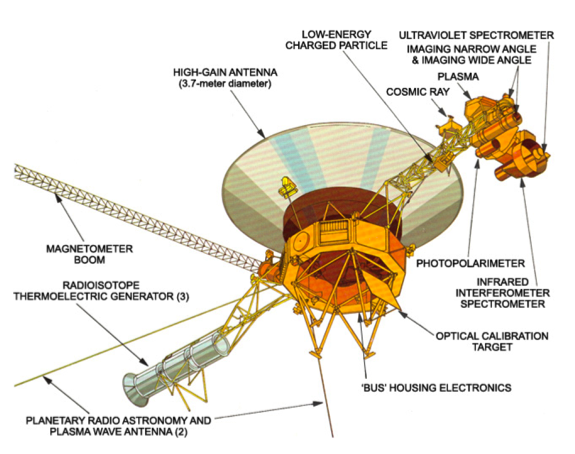- measure the energy spectrum of electrons from 3 - 110 MeV.
- measure the energy spectra and elemental composition of all cosmic ray nuclei from hydrogen through iron over an energy range from approximately 1 - 500MeV/nuc.
- provide information on the energy content, origin, acceleration process, life history, and dynamics of cosmic rays in the galaxy, and contribute to an understanding of the nucleosynthesis of elements in cosmic ray sources.
- provide information on the transport of cosmic rays, Jovian electrons, and low energy interplanetary particles over an extended region of interplanetary space.
- measure the three-dimensional streaming patterns of nuclei from Hydrogen through Iron and electrons over an extended range.
- measure particle charge composition in the magnetosphere of Jupiter, Saturn, Uranus, and Neptune.

Instrument Description
The Cosmic Ray Subsystem consists of two high Energy Telescopes (HET), four Low Energy Telescopes (LET) and The Electron Telescope (TET). The detectors have large geometric factors (~ 0.48 to 8 cm^2 ster) and long electronic time constants (~ 24 [micro]sec) for low power consumption and good stability. Because of the high particle fluxes encountered at Jupiter counting rates in single detectors and various coincidence rates were used.
CRS Science Objective
References Helpful in Scoping the Mission
Mission Description
Spacecraft Description
Spacecraft Description
The CRS Data
Instrument Description - Also see Space Science Reviews 21 (1977-Issue 3) 355-376.
The Data are located at the PDS/PPI node.
The Data are located at the PDS/PPI node.
Publications - A listing of team members to facilitate literature searches.
 PDS: The Planetary Atmospheres Node
PDS: The Planetary Atmospheres Node


